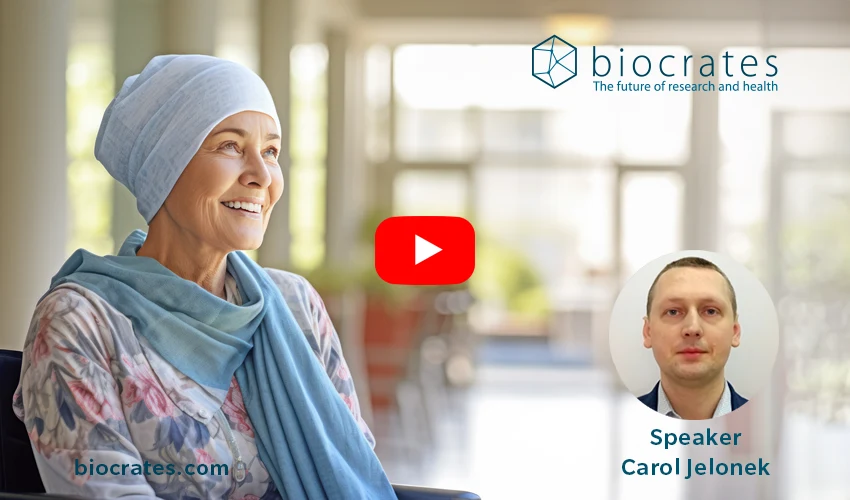You are currently viewing a placeholder content from YouTube. To access the actual content, click the button below. Please note that doing so will share data with third-party providers.
More Information
Speaker | Ass. Prof. Karol Jelonek
Affiliation | Naradowy Instytut Onkologii, University of Gliwice,
Gliwice | Poland
The study of pre-diagnostic serum samples from the Norwegian Trøndelag Health Study (HUNT2 study) shows age-dependent differences linked to breast cancer risk
The study analyzed pre-diagnostic serum samples from healthy women in the Norwegian Trøndelag Health Study (HUNT2 study) to identify molecular biomarkers linked to breast cancer risk.
Women participating in the HUNT2 study who developed breast cancer within a 15-year follow-up period (BC cases) and age-matched women who stayed breast cancer-free were selected (n=453 case-control pairs). Using a high-resolution mass spectrometry approach 284 compounds were quantitatively analyzed, including 30 amino acids and biogenic amines, hexoses, and 253 lipids.
Age was identified as a major confounding factor responsible for large heterogeneity in the dataset, so age-defined subgroups were examined separately. The subgroup of younger women (less than 45 years old) had the highest number of metabolites whose serum levels differentiated BC cases from controls (82 compounds). Notably, higher glyceride, phosphatidylcholine, and sphingolipid levels were linked to a lower risk of cancer in younger and middle-aged women ( less than 64 years old), while increased serum lipid levels were linked to an increased risk of breast cancer in older women (more than 64 years old).
Furthermore, while serum levels of several metabolites differed between BC cases diagnosed earlier (less than 5 years) and later (more than 10 years) after sample collection, these compounds were also correlated with participant age. The study’s findings were consistent with those of the NMR-based metabolomics study conducted in the HUNT2 cohort, which found that higher serum levels of VLDL subfractions were associated with a lower risk of breast cancer in premenopausal women.
The study found that differences in metabolite levels indicating impaired lipid and amino acid metabolism were associated with long-term breast cancer risk in an age-dependent manner.
This work has been supported by the Norwegian Financial Mechanism 2014-2021, Project 2019/34/H/NZ7/00503.
Related articles
- Predictive medicine – Transform medicine with metabolomics – part 2 of 5
- N-acetyl-aspartic acid (NAA) – Significant metabolite for brain function, metabolism, and disease
- Preventive medicine – Transform medicine with metabolomics – part 1 of 5
- Citric acid – Key metabolite in energy production, bone health, and disease therapy
- Precision nutrition – Unlocking health through metabolomics

